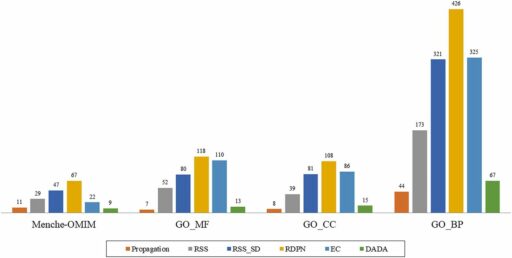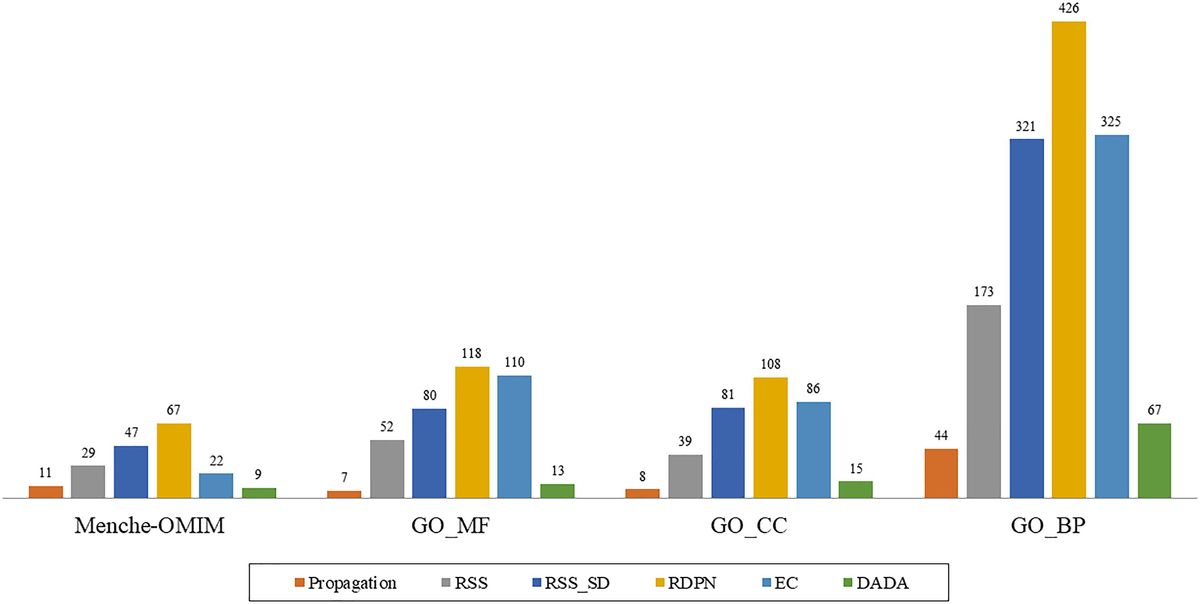Table of Contents
Data normalization is a foundational process in database management and data analysis that aims to structure data in a way that reduces redundancy and improves consistency. By following a step-by-step guide to normalization, one can ensure data integrity and optimize database performance. This article provides a comprehensive guide to the techniques and best practices of data normalization, covering everything from the fundamentals to practical applications and considerations for achieving effective data modeling.
Key Takeaways
- Normalization is a methodical approach to decompose tables, reduce redundancy, and ensure logical data dependencies, which is essential for maintaining data integrity and enhancing performance.
- Understanding the levels of normalization, such as 1NF, 2NF, and 3NF, is crucial for structuring databases effectively and avoiding both over-normalization and under-normalization.
- Data cleaning and preprocessing, including the elimination of duplicate records and standardization of data, are integral steps that complement normalization and contribute to consistent data analysis.
- Balancing normalization with denormalization is important for database design, taking into account the specific needs of the business and the trade-offs between reducing redundancy and increasing complexity.
- Incorporating expertise in data analysis and modeling, as well as implementing security measures, are best practices that should guide the normalization process to ensure robust and secure data models.
Understanding the Fundamentals of Data Normalization


Defining Data Normalization and Its Importance
Data normalization is a systematic approach that involves organizing data within a database to reduce redundancy and improve logical consistency. It is essential for maintaining data integrity and optimizing database performance. By decomposing tables and ensuring that data dependencies make sense, normalization helps to prevent anomalies during data manipulation and conserves storage space.
Normalization is not just about data organization; it also plays a critical role in making data easier to understand and assess. For example, normalizing a range of student math scores from 0 to 100 to a scale of 0 to 1 allows for more straightforward comparison and analysis.
Normalization involves a trade-off between reducing redundancy and increasing complexity. It is crucial to strike the right balance to avoid over-complication or data update anomalies.
The importance of normalization extends beyond the technical aspects of database management. It is also about ensuring that the data is structured in a way that aligns with analysis goals and is accessible to business users. This alignment is vital for making informed decisions based on accurate and reliable data.
Levels of Normalization: 1NF, 2NF, 3NF
Understanding the levels of normalization is essential for structuring databases efficiently. First Normal Form (1NF) ensures that each table has unique columns and no repeating groups. To achieve 1NF, each cell must contain atomic values, and each record needs to be unique.
Second Normal Form (2NF) is about removing partial dependencies; it requires that all non-key attributes are fully functionally dependent on the primary key. This means that if a table contains composite keys, each piece of data should relate to the whole key, not just a part of it.
Third Normal Form (3NF) takes it a step further by ensuring that all non-key attributes are not only fully dependent on the primary key but also independent of each other. This eliminates transitive dependencies, where one non-key attribute depends on another non-key attribute.
While these forms lay the groundwork for a robust database design, it’s important to balance normalization with practical application needs, such as query performance and the complexity of data relationships.
Normalization is a progressive process, and each level builds upon the previous one. It’s crucial for analyzing unstructured big data, and tools like the CLARIN infrastructure can assist with text normalization for linguistic processing. For simpler tasks, even Excel can be utilized to normalize data using mean, standard deviation, and standardized formulas.
The Role of Normalization in Data Integrity and Performance
Data normalization is pivotal in maintaining the integrity and enhancing the performance of databases. It systematically organizes data to minimize redundancy and optimize logical consistency, which is crucial for preventing anomalies during data manipulation and conserving storage space. This process not only ensures that data dependencies make sense but also facilitates efficient data retrieval and update operations.
Normalization must be balanced with the complexity it introduces. While it is essential for ensuring data integrity, over-normalization can lead to an overly complex database structure, which may hinder performance. Conversely, under-normalization can cause data anomalies and increased storage requirements.
To illustrate the impact of normalization on data integrity and performance, consider the following points:
- Implementing primary keys and foreign keys establishes clear relationships and enforces referential integrity.
- Database constraints such as unique, check, and not null constraints help ensure data validity.
- Effective transaction management is crucial for maintaining a balanced state in databases, preventing corruption and ensuring data reliability.
Practical Techniques for Normalizing Data


Step-by-Step Process for Applying Normal Forms
The process of normalizing data involves several key steps, each corresponding to a level of normalization. First Normal Form (1NF) requires the elimination of duplicate columns within the same table. To achieve 1NF, each table cell must contain a single value, and each record needs to be unique.
Moving to Second Normal Form (2NF), it’s essential to remove subsets of data that apply to multiple rows and place them in separate tables, creating a clear division of data that relates to the primary key.
Third Normal Form (3NF) is about reducing the duplication of data across the database. It ensures that every non-primary key attribute is not only dependent on the primary key but is also directly related to it.
While the fourth and fifth normal forms exist, they are rarely used in practice and are typically reserved for more complex scenarios.
Here is a summary of the steps:
- Ensure that each table cell contains a single value.
- Remove duplicate records to achieve a unique dataset.
- Separate subsets of data into different tables where they relate to multiple rows.
- Reduce data duplication by ensuring non-primary key attributes depend on the primary key.
By following these steps diligently, you can enhance the quality and integrity of your database, making it more manageable and efficient.
Identifying and Eliminating Duplicate Records
Duplicate records in a dataset can lead to skewed results and unreliable insights. Identifying and removing these duplicates is crucial for maintaining the integrity of data analysis. The process typically involves the following steps:
- Scanning the dataset for identical entries across all fields.
- Reviewing potential duplicates to confirm their redundancy.
- Deciding on a method for removal, such as keeping the first occurrence or the most complete record.
- Executing the deletion of duplicates, ensuring the process is documented for reproducibility.
By meticulously eliminating duplicate records, we ensure that each data point uniquely contributes to the analysis, preserving the dataset’s accuracy.
It’s important to note that while removing duplicates, one must consider the context of the data. For instance, entries that appear identical might be legitimate repetitions in certain scenarios, such as repeated transactions in sales data. Careful examination and understanding of the dataset’s nuances are essential before proceeding with the elimination of duplicates.
Balancing Normalization with Denormalization
While normalization ensures data integrity and flexibility by eliminating redundancy and dependency, denormalization can be strategically employed to optimize query performance. This balance is crucial in database design, as each approach has its own set of trade-offs.
Normalization reduces redundancy and increases complexity, which can be beneficial for maintaining data integrity but may lead to performance issues. On the other hand, denormalization might improve performance but should be done judiciously to avoid data update anomalies. It’s essential to keep the analysis goal and business users in mind when considering these techniques.
The key is to find the right balance between normalization and denormalization, ensuring that the database design supports both the integrity of the data and the efficiency of the queries.
Here are some levels of normalization you should consider:
- First Normal Form (1NF)
- Second Normal Form (2NF)
- Third Normal Form (3NF)
Remember, both over-normalization and under-normalization can lead to problems. Use normalization as necessary to optimize database performance, and incorporate denormalization with caution.
Data Cleaning and Preprocessing


The Interplay Between Data Cleaning and Normalization
Data cleaning and normalization are two critical processes in preparing a dataset for analysis. Data cleaning focuses on removing errors and inconsistencies, such as deleting duplicate values, fixing inaccuracies, and addressing biases. On the other hand, data normalization is about organizing data coherently, reducing redundancy, and ensuring logical consistency.
Normalization often follows data cleaning, as it builds upon the cleaned data to structure it effectively for storage and retrieval. However, it’s essential to recognize the trade-off involved: while normalization reduces redundancy, it can increase complexity. In some scenarios, denormalization may be employed to enhance performance, but it must be done carefully to avoid data update anomalies.
The goal of these intertwined processes is to ensure that the data is not only error-free but also structured in a way that supports efficient and accurate analysis.
It’s crucial to keep the analysis goal and business users in mind when deciding the extent of normalization. Here’s a simple list to consider during these processes:
- Standardizing inputs
- Removing outliers
- Deduplication
- Decomposing tables to eliminate redundancy
- Ensuring data dependencies make sense
Standardizing Data for Consistency in Analysis
Standardizing data is a pivotal step in the data preprocessing phase, ensuring that measurements across different systems and scales are consistent. This uniformity is essential for enabling fair comparisons and balanced contributions of variables in data analysis.
For example, consider a dataset with various units of measurement. By standardizing these into a common scale, analysts can prevent any single feature from disproportionately influencing the results. The table below illustrates the advantages of standardization:
| Advantage | Description |
|---|---|
| Consistency | Standardized data across the organization |
| Efficiency | Centralized data improves operational workflow |
| Decision-Making | Reliable data for analytics and insights |
| Development Speed | Pre-defined structures for quicker development |
Standardization not only simplifies the analysis but also accelerates development by providing a clear framework for data handling.
Normalization, on the other hand, is about organizing data to eliminate redundancies, while denormalization combines data elements to speed up analysis. It’s crucial to balance these approaches based on the analysis goals and the needs of business users.
Strategies for Effective Data Cleaning
Effective data cleaning is a critical step in ensuring the quality of data analysis. Remove irrelevant values to begin the process, as these can skew results and misguide interpretations. This is the first and foremost thing you should do to maintain data integrity.
Next, focus on the elimination of errors that could distort your analysis. This includes standardizing inputs, deleting duplicate values, and fixing inaccuracies. For instance, consider the following steps:
- Standardize data formats to ensure consistency.
- Identify and remove duplicate records to maintain data integrity.
- Address outliers by either correcting or excluding them from the dataset.
Remember, the goal of data cleaning is to make the data as error-free as possible, which is essential for accurate and reliable analysis.
Lastly, it’s important to handle missing and noisy data appropriately. Depending on the type of difficulty you’re dealing with, there are numerous options, such as ignoring missing values or employing imputation techniques to fill gaps.
Optimizing Database Design through Normalization
Assessing the Need for Normalization in Database Design
When embarking on database design, it’s crucial to evaluate the extent to which normalization is required. Normalization techniques are essential for organizing data to minimize redundancy and ensure logical consistency. However, it’s important to strike a balance; over-normalizing can lead to excessive complexity, while under-normalizing may cause data anomalies and storage inefficiencies.
- Understand the levels of normalization: 1NF, 2NF, and 3NF.
- Consider the trade-offs between redundancy reduction and system complexity.
- Apply normalization judiciously to maintain data integrity without compromising performance.
Normalizing the schema involves breaking down tables into smaller units and establishing clear relationships through primary and foreign keys. This step is pivotal in enhancing data quality and integrity.
Remember that the goal of normalization is not just to eliminate redundancy, but also to create a database that is maintainable, scalable, and efficient. Expertise in data modeling is invaluable in determining the right degree of normalization for your specific use case.
Avoiding Over-Normalization and Under-Normalization
When optimizing a database, it’s crucial to strike the right balance between normalization and denormalization. Over-normalization can lead to an excess of tables with too few columns, which may complicate queries and degrade performance. Conversely, under-normalization can result in tables with redundant data, increasing the risk of update anomalies and compromising data integrity.
Balancing these aspects is key to a well-designed database that supports efficient data retrieval and maintains consistency.
To avoid these pitfalls, consider the following points:
- Assess the database’s purpose and the nature of the data.
- Determine the optimal level of normalization needed for your use case.
- Regularly review and refactor the database schema as requirements evolve.
Remember, the goal of normalization is to eliminate redundant data and ensure that each piece of data is stored only once. This not only reduces storage space but also improves data consistency. However, it’s important to recognize when denormalization may be beneficial for performance, especially in read-heavy systems where complex joins can be a bottleneck.
Finalizing the Data Model with Security Measures
Once the data model is nearing completion, it’s crucial to integrate security measures that will protect the data from unauthorized access and ensure its confidentiality, integrity, and availability. This integration should be an ongoing process, adapting to new security challenges and business requirements.
- Use encryption for sensitive data such as PII and passwords.
- Implement role-based access control (RBAC) to restrict data access to authorized personnel.
- Regularly review and refine the data model to align with organizational objectives.
- Conduct scheduled assessments and solicit stakeholder feedback for continuous improvement.
Finalizing the data model is not just about structure and efficiency; it’s about embedding security into the fabric of the database to safeguard critical information.
Remember, database security starts with a good schema design and is reinforced by adhering to data governance and security best practices. By incorporating these practices early in the design process, you ensure that the database is not only functional but also secure and compliant with relevant regulations.
Best Practices and Considerations for Data Normalization


When to Normalize and When to Denormalize Data
Understanding when to normalize and when to denormalize data is crucial for maintaining a balance between data integrity and system performance. Normalization optimizes data integrity by reducing redundancy and inconsistency, which is essential for ensuring that data remains accurate and reliable over time. However, it can also increase the complexity of queries and the time required for read operations.
On the flip side, denormalization can enhance performance by reducing the number of join operations required during query execution, making the analysis process quicker. This is particularly beneficial when dealing with large datasets where read performance is a priority. However, it’s important to consider that denormalization may introduce data update anomalies and should be approached with caution.
- Normalization should be applied when data integrity is paramount.
- Denormalization may be considered when system performance is a critical factor.
Balancing the trade-offs between normalization and denormalization requires a deep understanding of the database’s role within the organization and the specific needs of business users. It’s a decision that should be made with both the analysis goals and the end-users in mind.
Incorporating Expertise in Data Analysis and Modeling
Expertise in data analysis and modeling is crucial for creating a robust data normalization strategy. Selecting the appropriate modeling technique is foundational to the process. Relational modeling is often used for applications with end-user interaction, while dimensional modeling is better suited for analytics and business intelligence (BI) tasks.
Effective data modeling ensures that data remains relevant and logically organized, facilitating pattern identification and predictive analysis. When integrated with BI tools, it allows for the extraction of actionable insights, which are essential for informed decision-making.
The art of database modeling is not just about structuring data; it’s about aligning data strategy with business objectives to make data work effectively for the organization.
Adhering to best practices in data modeling, such as using clear and consistent naming conventions, is imperative. This not only streamlines data management but also enhances communication, especially when sharing insights with external parties. Below is a list of best practices to consider:
- Align the data modeling process with business goals.
- Choose a modeling technique that maximizes efficiency for specific use cases.
- Integrate the data model with BI to enhance clarity and communication.
- Maintain data relevance through logical organization for easy analysis.
Concluding Thoughts on Effective Data Normalization
In the journey of mastering data normalization, it’s crucial to recognize that each decision impacts the balance between redundancy and complexity. The process is not just about adhering to normal forms but also about understanding the specific needs of your database and its users.
- Keep in mind the trade-off between reducing redundancy and increasing complexity.
- Consider denormalization for performance, but only when it does not compromise data integrity.
- Always align normalization efforts with the analysis goals and the needs of business users.
Data normalization is an essential practice in efficient and consistent database design. By organizing data and eliminating redundancies, databases become more logical and less prone to anomalies.
As we finalize our data models, it’s imperative to not only focus on the technical aspects but also on the broader implications of our choices. The ultimate goal is to create a system that is both robust and flexible, capable of adapting to new challenges and requirements.
Conclusion
In conclusion, data normalization is an essential process in database management and data analysis that aims to reduce redundancy and ensure logical data consistency. Throughout this guide, we’ve explored various normalization techniques, from the basic First Normal Form to the more complex Third Normal Form, and discussed the balance between normalization and denormalization. We’ve also highlighted the importance of data cleaning, standardizing, and eliminating duplicate records to maintain data integrity. Whether you’re working with Excel or a relational database, applying these best practices will help you achieve a well-structured data model that supports efficient data manipulation and analysis. Remember, the key is to find the right level of normalization for your specific needs, keeping in mind the trade-offs between reducing redundancy and increasing complexity. With the insights and steps provided in this article, you’re now equipped to tackle data normalization with confidence and expertise.
Frequently Asked Questions
What is data normalization and why is it important?
Data normalization is a systematic approach of decomposing tables to eliminate data redundancy and ensure data dependencies make sense, improving a database’s logical consistency. It helps prevent anomalies during data manipulation, conserves storage space, and enhances performance.
What are the levels of normalization I should consider?
The levels of normalization to consider include First Normal Form (1NF), which eliminates duplicate columns from the same table; Second Normal Form (2NF), which removes subsets of data that apply to multiple rows and places them in separate tables; and Third Normal Form (3NF), which divides tables to reduce data duplication across databases.
How does normalization affect database performance?
Normalization can optimize database performance by reducing redundancy and improving integrity. However, over-normalization can lead to increased complexity and under-normalization can cause problems, so it’s important to find the right balance.
What is the difference between normalizing and denormalizing data?
Normalizing data involves organizing data into a coherent database and eliminating irrelevant or repetitive data, while denormalizing involves combining multiple tables or databases to make analysis quicker. The choice between the two should be based on analysis goals and user needs.
What role does data cleaning play in normalization?
Data cleaning is a preprocessing step that ensures consistency in measurements and transforms diverse scales and units into a standardized format. It is crucial for fair comparisons and preventing certain features from dominating others in analysis, which complements the normalization process.
When should I consider denormalization in my database design?
Denormalization should be considered when performance needs outweigh the benefits of normalization, such as when query speed is a priority. However, it should be done judiciously to avoid introducing data update anomalies and to maintain data integrity.





